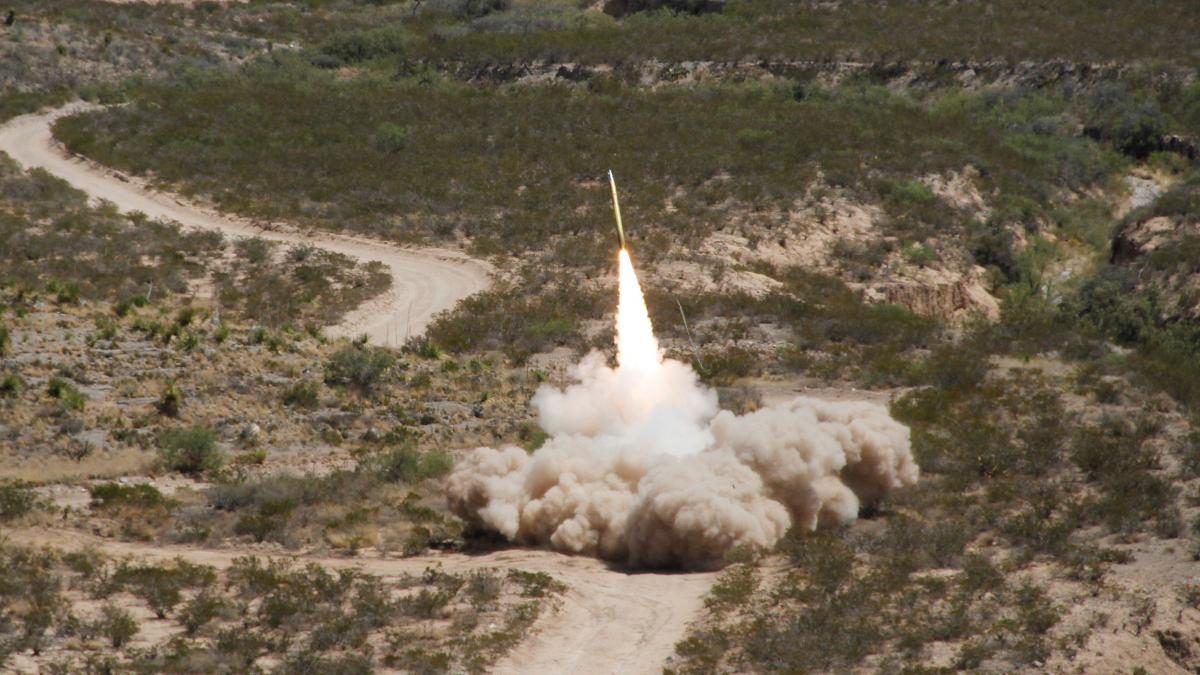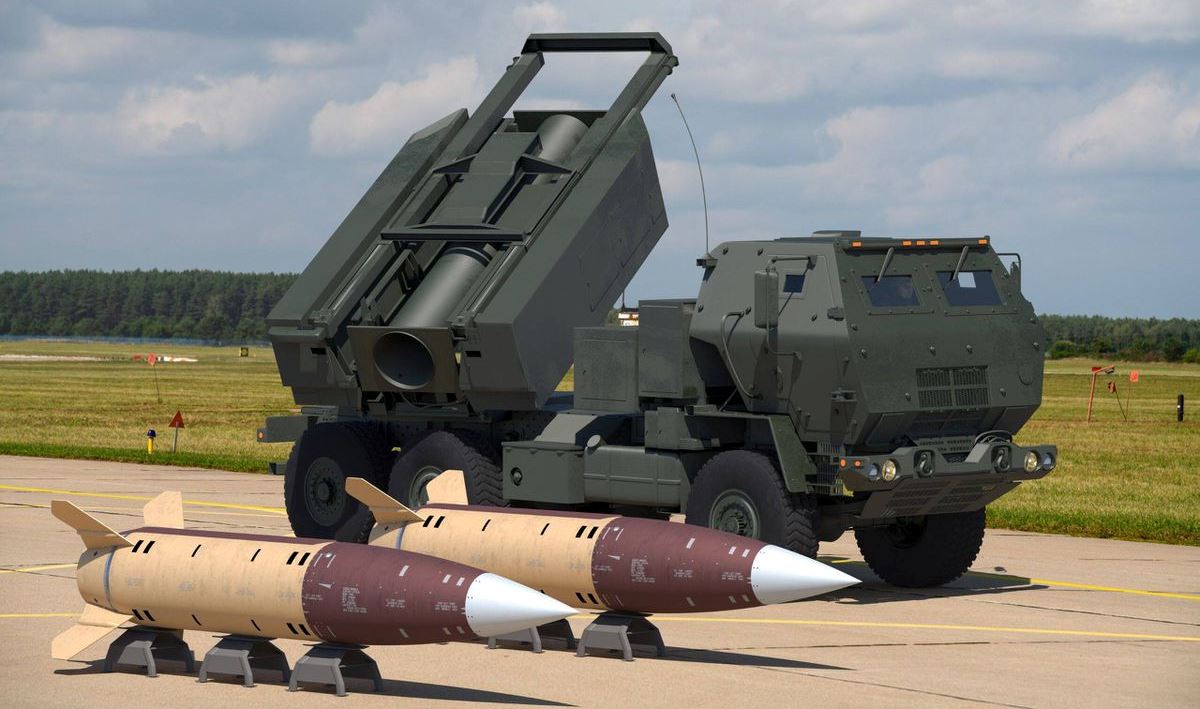Atacms Vs Himars - 1/2 Show caption + Hide caption - The new M57A1 Tactical Missile System missile is fired over the cabin of an M142 High Mobility Artillery Rocket System launcher. New combat conditions demand lethal and non-lethal precision fires that can be fired from the ground to pr... (Photo credit: USA) View Original
2 / 2 Show caption + Hide caption – An M270 Multiple Rocket Launcher System fired during a September 2017 exercise in Rocket Valley, South Korea by the 2nd Infantry Division/ROK-U.S. A joint division to train in field artillery operations. A long-range missile of... (Photo credit: USA) View original
Atacms Vs Himars

With Russia and China dismantling ATACMS, the US doesn't just want to catch up, it wants to dominate.
U.s. Readies New $1 Billion Ukraine Weapons Package
Restoring US dominance in long-range marksmanship topped a list of six new priorities released in October by Chief of Staff General Mark E. Miley and Acting Secretary Ryan D. McCarthy. If you go back in time and tell the former readers of this magazine in the early 1990s that this would happen - 20 years after it had lost its superiority in long-range missiles, and in favor of Russia, no less - they would. You may be surprised.
At the time, the United States was the last superpower standing, and precision, long-range missiles that allowed it to hit key targets far from enemy lines established its military superiority in the post-Cold order. were an important factor. war Now, as Major General Cedric T. Vince admitted at the Association of the United States (AUSA) annual meeting in 2017, the United States may be "out-maneuvered and overwhelmed" by its adversaries.
The Tactical Missile System, or ATACMS, was It was launched in 1986 to attack high-value targets such as airfields, artillery and missile forces, supply areas and command groups. ATACMS helped the United States and its allies win quick victories in Operations Desert Shield and Desert Storm. Stephen K. Connor, then acquisition manager, described ATACMS performance in Operation Desert Storm in the May-June 1991 issue of RD&A Bulletin (a predecessor of this magazine): "The system was used against surface-to-air missile sites , logistics sites, Scud [missile], howitzer and rocket batteries and tactical bridges” and were considered a valuable asset. "There are indications that the ATCMS destroyed or disabled all of its targets."
The first iteration of ATACMS can hit stationary surface targets up to 100 miles away. The second generation, Block 1A, added GPS guidance for greater accuracy and had a range of 165 to 185 miles. Ground commanders of ground units did not have access to this type of range prior to ATACMS. The Lance missile modified by ATACMS had a maximum range of 46 miles when fitted with a conventional warhead, but was primarily intended to deliver a nuclear warhead.
Bridés, Les Himars Livrés Par Les États Unis à L'ukraine Ne Peuvent Tirer D' Atacms à Longue Portée
The program was canceled in the 1980s. Later defense analysts would recognize the technological advances that ATACMS capitalized on as the "second shift", when precision guidance, combined with stealth technology, put the US military beyond the reach of any competitor.
Then, after a decade of unchallenged military superiority, the United States and its allies were embroiled in two wars and ultimately two coups, in which artillery was less important and therefore received less attention and money. Russia and China, meanwhile, are emerging as close rivals that they have refocused on, both developing long-range weapons that, along with their electronic warfare and intelligence capabilities, have a battlefield advantage in their favor. Remove them. ATACMS is now 30 years old, large, and not modular enough to meet today's needs, and technologies that were revolutionary 30 years ago have become widespread. Thus, Milley and McCarthy call for "a long-range sniping capability that restores American dominance in range, ammunition, and target acquisition."
The future demands it. The new multi-domain war paradigm calls for expanding its scope beyond just land warfare, "staged and non-lethal fires directed from the land domain to affect all domains," writes General David J. Perkins. . November-December 2017 issue of Military Review. (Perkins has served as the commanding general of the U.S. Training and Doctrine Command since March 2014, and in that role was instrumental in formulating the multidomain warfare concept.) Combined in the air, on land and at sea, it may be necessary. Be able to help other services. Maintaining control over its traditional domain - thus the possibility of long-range missiles fired from the ground by aircraft shooting units, if not a central requirement, is nevertheless part of the conversation.

The current also requires better long-range fire. It can no longer be assumed that air power can destroy key targets, given the robust air defenses built by Russia and China and the web of technological and military reforms that allow adversaries to access these areas. Deny what they claim. In any conflict with a close ally, the requirement is to be able to strike from a greater distance - beyond the range of the adversary's own long-range fire.
Ukraine: What Are Himars Missiles And Are They Changing The War?
What will it take to develop a long-range weapon that not only replaces ATACMS but is better? The wish list includes:
• To a great extent. "It will not be the artillery of yesteryear; it will be artillery capable of striking at much wider ranges with accurate land fire that our enemies will never expect, much more than what we have.", Mili AUSA's Oct. Tell the 2017 encounter.
• Ability to replace new components as they improve. Open architecture — so that individual components or subsystems can be upgraded piecemeal and by vendors if necessary without the original manufacturer — is also on the list of requirements for the next long-range missile. Better guidance technology is one of those trade-offs, as navigation improves. There may be another new engine that can propel the missile even further. The alternative range of ATACMS is limited by U.S. obligations under the 1987 Intermediate-Range Nuclear Forces Treaty, in which the U.S. and Russia rejected long-range ballistic missiles of 500 kilometers, or 310 miles. While the US State Department protested in 2014, 2015 and 2016, Russia tested new missiles that violated the 500 km range. The possibility of adding more powerful flight engines suggests that the US could match Russia if necessary.
• Compatibility with existing launch platforms. The ATACMS launch vehicle is a multiple launch rocket system family and is fired from the truck-mounted High Mobility Artillery Rocket System (HIMARS).
Ukrajinci Už Mají Rakety Pro Himars S Doletem 300 Kilometrů, Napovídají Důkazy
• A slim profile. Depending on the ammunition it is loaded with, each ATACMS missile can weigh between 3,000 and 3,600 pounds. Each is 13 feet tall and about 2 feet in diameter. All told, it's big enough that only two missiles can fit on more than one launch rocket system, and only one more can fit on mobile HIMARS. Le wants to fit more missiles on each platform and have more firepower in the air.
Current prototype designs can carry twice as many missiles per launcher and can hit targets up to 309 miles away, compared to the ATACMS's range of about 100 miles and one missile per model. Raytheon Co. and Lockheed Martin Corp. Both are developing missile prototypes under a 36-month contract awarded in 2017 to move the prototype through a technology maturity and risk mitigation phase. The contract is expected to be completed in 2019 with several guided flight tests, followed by the selection of a single contractor to field the missile by the late 2020s.
In addition, to keep ATACMS viable until a new long-range precision weapon is developed, Lockheed is adding new guidance technology and replacing cluster warheads with simple warheads as part of a maintenance and sustainment agreement. as part of (Lockheed acquired a small producer that fielded the original missile in the 1990s.)

Unlike past modernization efforts—such as the Future Combat Systems Program, canceled after the DOD decided the $18 billion did not buy enough development—where some technical components of the design had not yet matured. Targets are already viable for long-range precision shooting. JR Smith, director of Advanced Ground Warfare Systems for Raytheon, told Jane's in a June 2017 interview, “We're not trying to invent anything new. The action system, the warhead design - all were well understood.
Can Us Supplied Himars Be A Game Changer For Ukraine?
The challenge, now, is not simply to regain the technological superiority that the US enjoyed at the time, but to do so while walking the fine line between taking too many risks with untested technologies and none at all.
For a historical tour of AL&T over the past 56 years, visit the AL&T Magazine Archives at http://asc./web/magazine/alt-magazine-archive/. Allows the Pentagon to replenish stocks of missiles, projectiles and launchers.
The document emphasizes the production of ATGMs, MANPADS, artillery ammunition and missiles, as well as their precise versions.
According to the text of the National Defense Authorization Act for Exercise
Us Approves M142 Himars Sale To Estonia
Sig p365 tulster holster, sig p365 iwb holster, sig holsters p365, sig p365 sas holster, sig p365 xl holster, sig p365 hybrid holster, appendix holster sig p365, safariland holster sig p365, sig p365 belt holster, sig p365 holster, sig p365 purse holster, sig sauer p365 holster
0 Comments